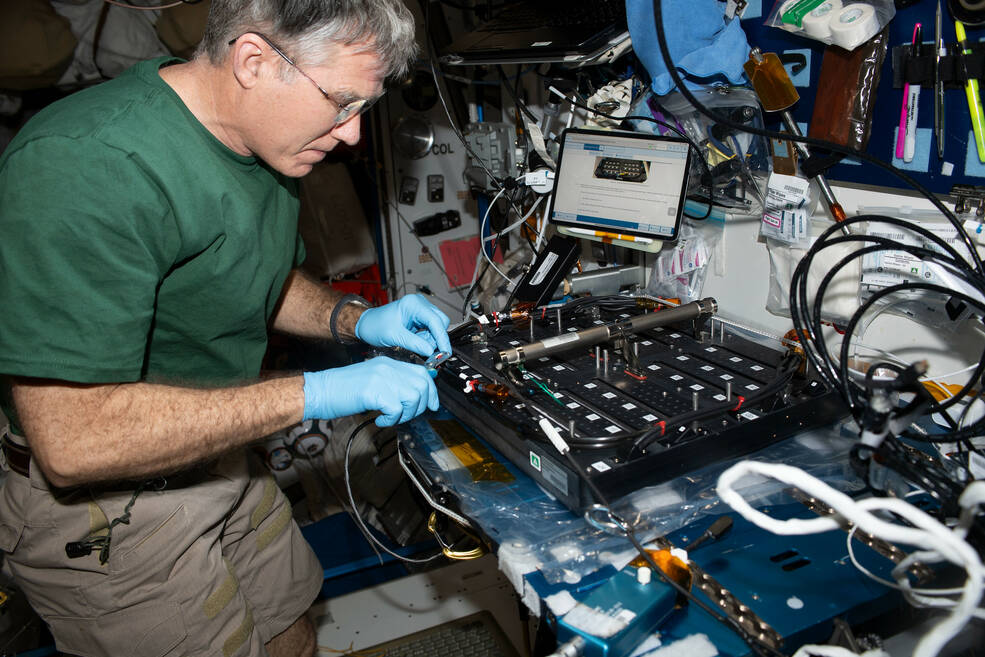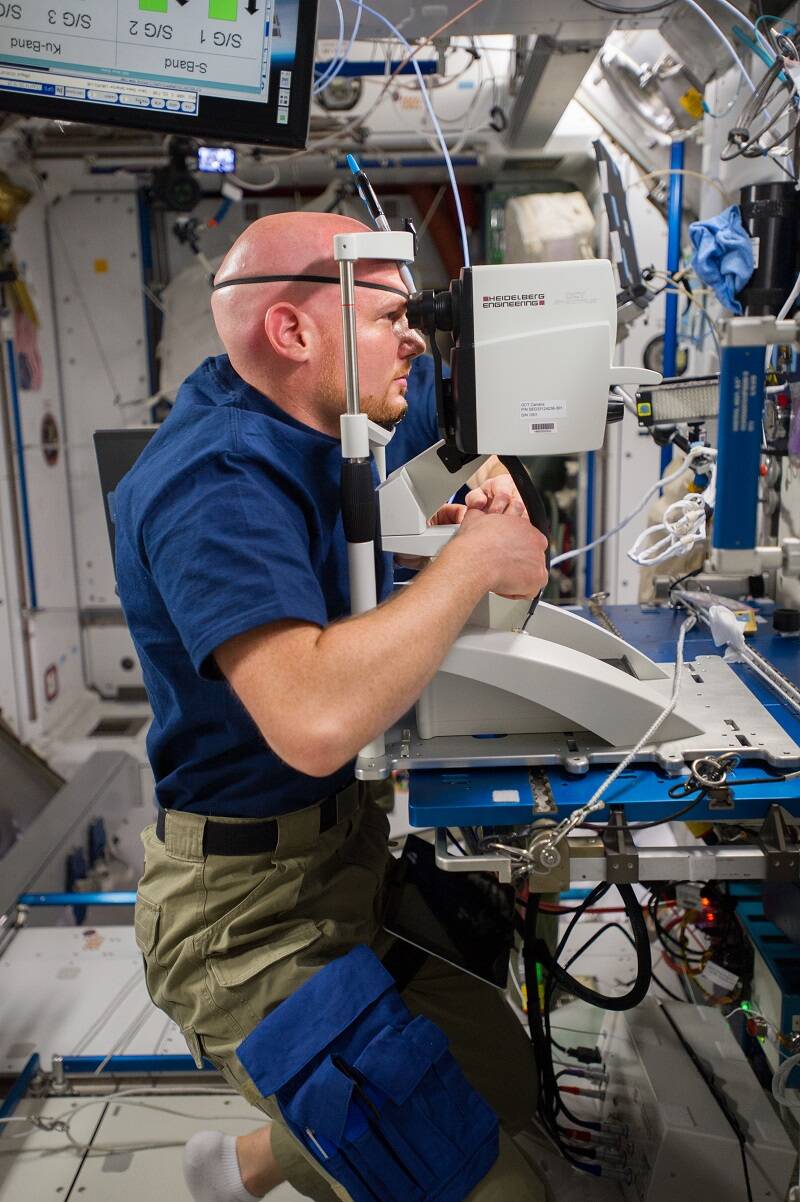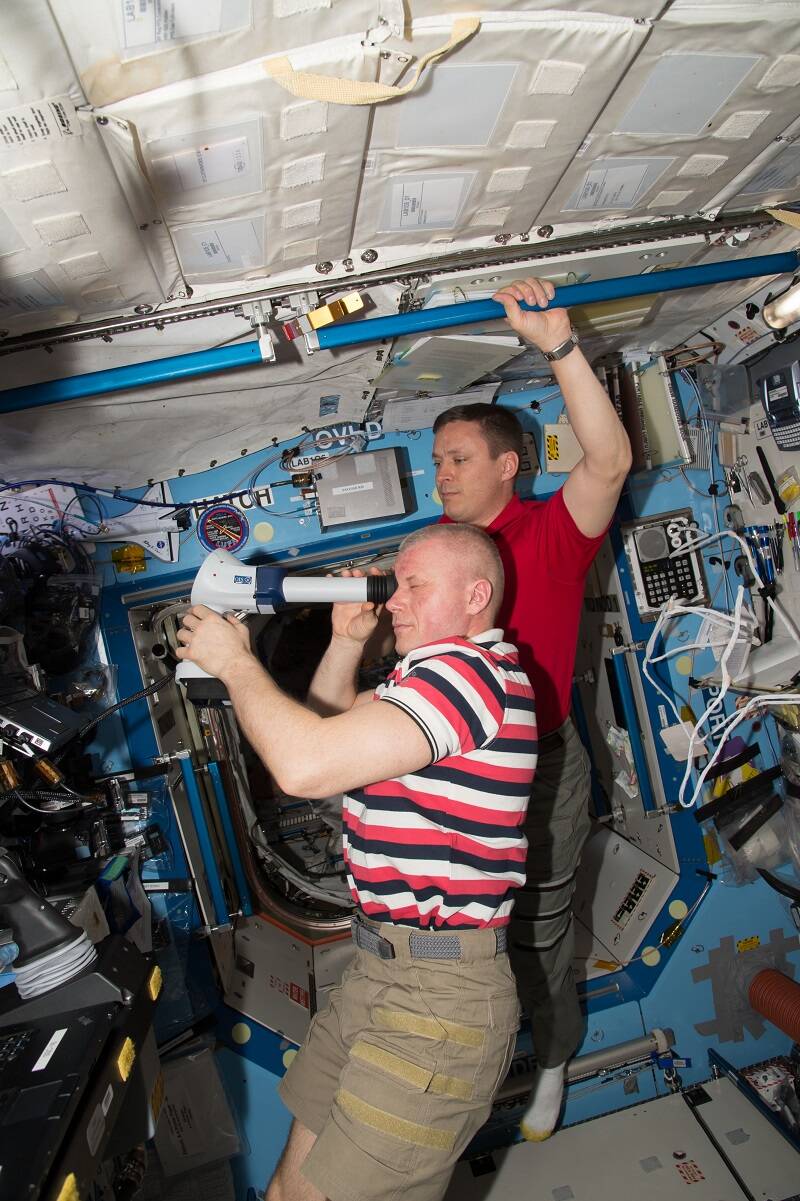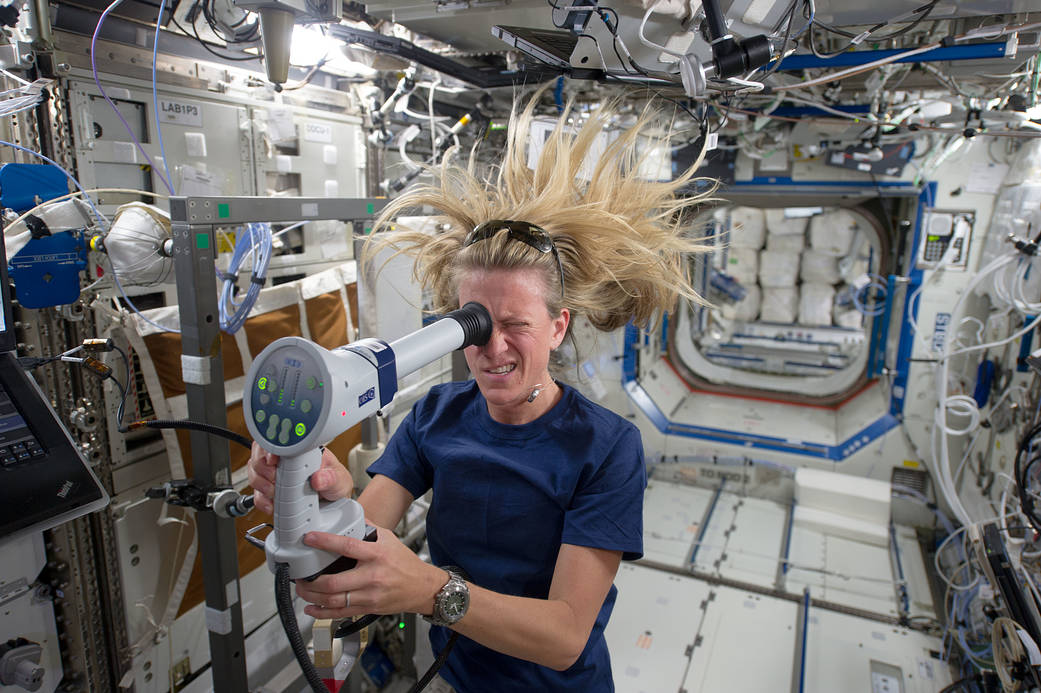Crew members aboard the International Space Station conducted a variety of scientific investigations during the week ending July 28, 2023, including conducting sessions for ISAFE, which measures changes in astronaut’s eyes, brain, and blood vessels during missions of varying lengths.
Astronauts experience changes to their eyes and vision during spaceflight, a phenomenon known as Spaceflight Associated Neuro-Ocular Syndrome (SANS). Microgravity causes a person’s blood and cerebrospinal fluid to shift toward the head, and researchers suspect that these fluid shifts are an underlying cause of SANS.
ISAFE measurements could help scientists determine whether SANS varies with mission length, whether vision recovers after returning to Earth, and how long recovery takes. That insight is needed to protect the eyes and vision of astronauts on future long-duration spaceflights. SANS shares some characteristics with conditions on Earth, including increased pressure in the brain, and results also could provide new insights benefitting people who experience those conditions.
SANSORI, an ongoing investigation from CSA (Canadian Space Agency), investigates whether individuals who have a particularly rigid eye structure due to stiffness in the eye’s outer coating are less likely to develop SANS. Researchers also are examining whether SANS is more likely to happen when blood vessels in the choroid (a thin layer of tissue in the eye) become engorged.
Vision Impairment and Intracranial Pressure (VIIP) was one of the first investigations to test the hypothesis that fluid shifts in microgravity caused increased pressure in the brain, leading to changes in eye structure and, as a result, vision. The study used MRI and other tools to examine changes in the eye structure but did not provide conclusive evidence that fluid pressure was the sole cause of vision changes.
Another experiment, Ocular Health, gathered data from station crew members during and after flight from March 2013 to September 2016. Researchers found structural alterations to the eyes that occurred early during spaceflight and persisted throughout the mission. Postflight recovery took 30 to 90 days. Some of the analytic tools used for ISAFE are enhancements of those used for Ocular Health.
An investigation conducted from 2015 to 2020, Fluid Shifts, measured fluid movement into and out of the head to determine how these shifts may lead to changes in the eyes. That study was the first to reveal changes in the way blood drains from the brain in microgravity. In addition, the study found that a device that creates a pressure difference on the lower body could help prevent or reverse fluid shift.
The definitive cause of SANS has yet to be identified, but research suggests it involves multiple factors. Those likely include increased pressure in the head due to fluid shifts as well as overfilling of blood vessels, genetics, and other factors.
ISAFE is part of a larger NASA study, Complement of Integrated Protocols for Human Exploration Research on Varying Mission Durations or CIPHER, that looks at the effects of spaceflight on the entire human body over multiple mission durations.






























